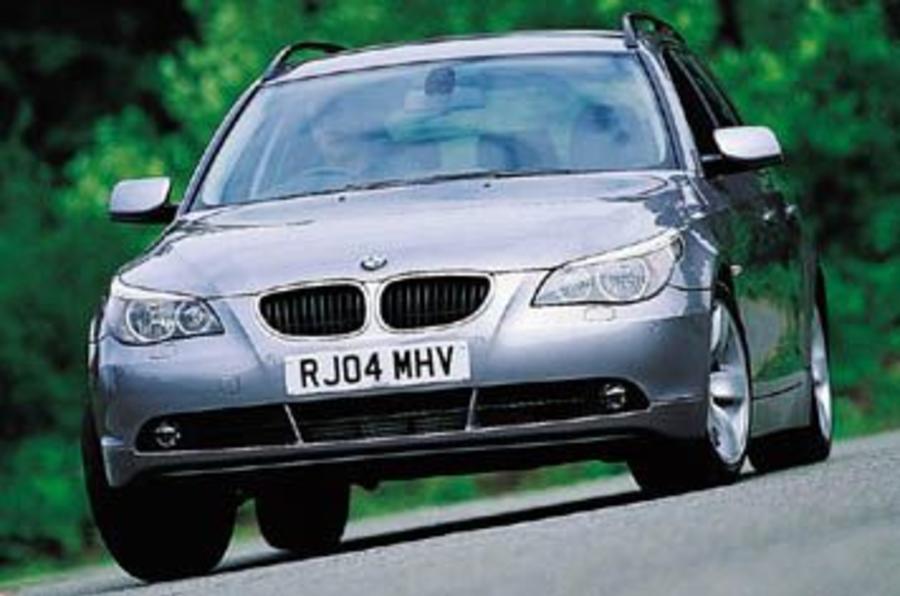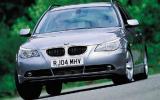BMW doors still shut with a resounding ‘thunk’. Which is nice, because it signifies that I’m safely ensconced inside this comfortable and fastidiously built – if rather stark and modernist – cabin of a 525d. A glance in the rear-view mirror reveals significantly more depth before any glass, but otherwise this new Touring feels like any 5-series saloon.
Outside is different. Outside is a world of unavoidable styling-based caveats. Outside also means homework. No car has brought factory-fit options into focus like the new Five. Having Dynamic Drive or Active Steering fitted affects the driving experience to the extent that it’s virtually a different car with either of these options on board. Today it’s a 525d manual with ‘normal’ steering and no Dynamic Drive.
As for the styling, this is arguably the most visually appealing of all the Bangle-era creations and definitely the most cohesive. It’ll inescapably divide opinion, but there’s no denying its impact or aura of executive prestige and power on the road, especially in the metallic grey of our test car. Getting rid of the awkward lump on the boot for a graceful C-pillar treatment has done wonders for the looks.
Losing half a litre in capacity over the 530d hasn’t made this car a poor relation. In fact, just as BMW’s petrol 2.5 six is sweeter than the brawnier 3.0-litre version, so the smaller diesel unit also has the edge in refinement. It lacks the hushed serenity of Jaguar’s new S-type diesel, but the 525d’s dry, dark rasp is a satisfyingly sporting soundtrack.
And it’s quick: 8.3sec to 62mph quick. Although at 295lb ft it’s 74lb ft down on the 530d, there’s still more than enough torque to deliver a resounding surge of acceleration in the lower gears and the 525d still makes relentless progress at motorway speeds in top gear. It’ll rev energetically – and with outstanding smoothness – to the red line, encouraging blipped down-changes and spirited progress on back roads. What the 177bhp motor won’t do is frighten genuine sporting machinery like a 530d will, but so what?
The Touring shares the same front suspension as the saloon but the rear adopts a self-levelling air system. It feels every inch as capable, right up until eight-tenths, where the four-door’s superior poise begins to tell. The Touring feels rigid, with light but accurate steering and enough chassis absorbency to soak up undulations with aplomb. The damping exerts steely control when you’re really going for it and the chassis offers much more entertainment than a Mercedes E-class wagon’s.
But it is the Touring’s inability to cope with road-surface imperfections that exposes its major flaw, and for this we need to return to the spec sheet again. Our car was fitted with the optional 17in alloy wheels and, as 5-series anoraks will know, anything above the standard 16in combination is automatically fitted with Bridgestone run-flat tyres. As we’ve said many times before, the harm they do to the ride quality is considerable. This Touring fidgets and stumbles over even mild road scars. Trouble is, stick to the standard wheels and the styling goes AWOL. Bangle designs need big wheels to work. It’s your choice, and not an easy one at that.
As an estate, the Touring works well. The loading sill is low, the split tailgate useful and boot space is decent, if not as spacious as an E-class’s. There are some shallow storage areas under the carpet and the load cover deserves special mention for being unusually easy to fit and take out. In reality, there’s enough practicality for most owners’ needs.

















Add your comment